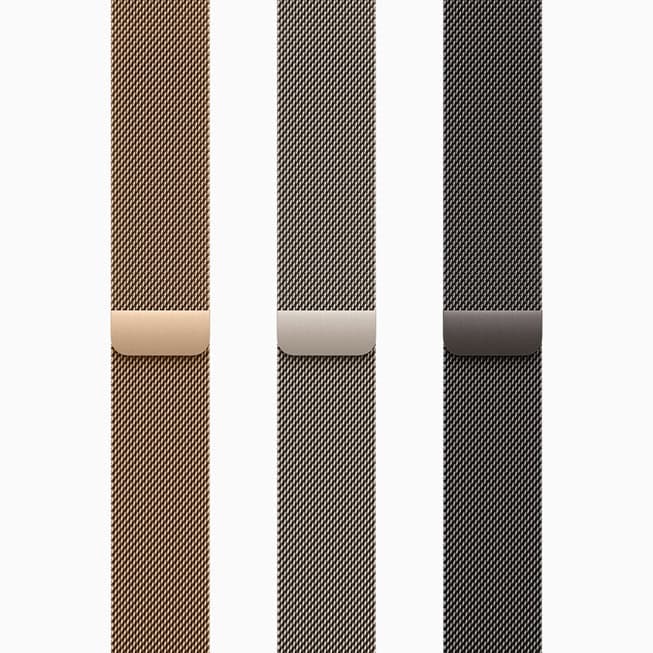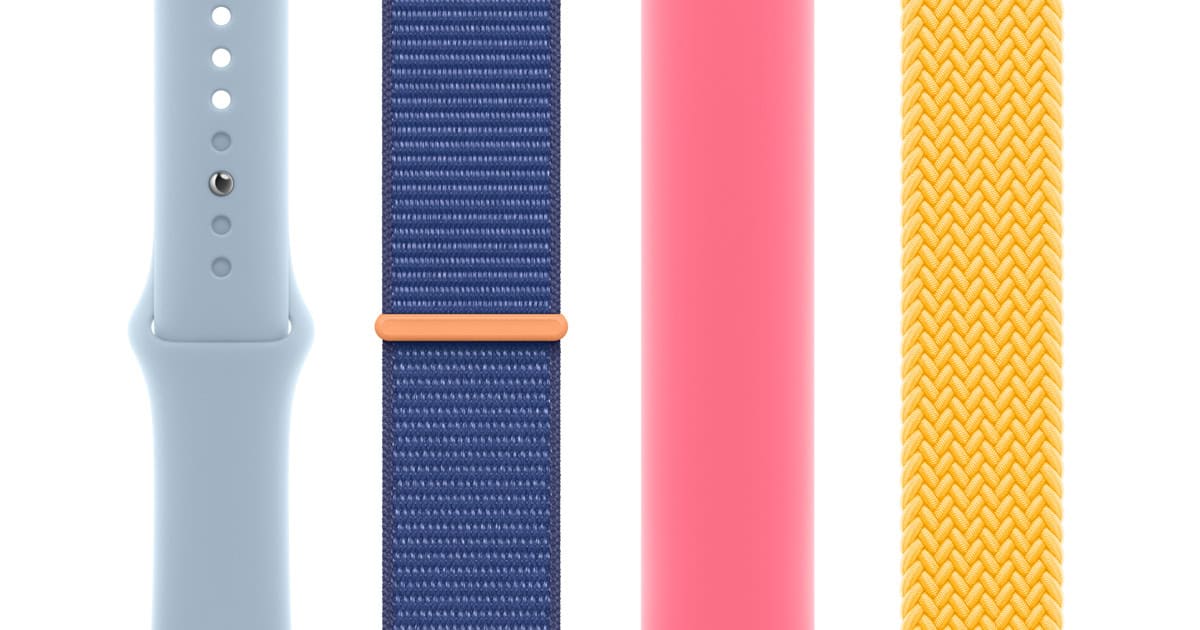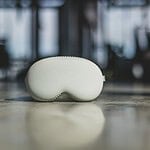Choosing the right Apple Watch band size is important for comfort and style. Luckily, Apple makes it easy to determine the best fit for your wrist.
Find the Perfect Fit for Your Apple Watch
Understanding the Measurements
Apple Watch bands are typically measured in millimeters (mm). Sizes may be indicated by numbers (for Solo Loop styles) or a combination of letters and numbers (S/M or M/L).

How To Measure Your Wrist
- Printable tool: Visit Apple’s website (https://www.apple.com/shop/Catalog/US/Images/bxxd/size-guide_CA.pdf) to print their sizing tool or see the PDF below. Cut it out and follow the instructions.
- Household items: If you don’t have a printer, use a flexible measuring tape or a strip of paper. Wrap it snugly around your wrist and mark where the material overlaps. Measure the marked length against a ruler.
Or download the Official Apple Watch band size PDF here:
Apple Watch Band Size Chart
Here’s a quick reference table summarizing Apple’s band sizing for common styles:
| Wrist Size (inches) | Wrist Size (mm) | 38mm/40mm/41mm Case Band Size | 42mm/44mm/45mm/49mm Case Band Size |
|---|---|---|---|
| 5.1 – 5.9 | 130 – 150 | Small | Small |
| 5.5 – 6.7 | 140 – 170 | Small/Medium | Small/Medium |
| 6.3 – 7.5 | 160 – 190 | Medium | Medium |
| 6.7 – 8.3 | 170 – 210 | Medium/Large | Medium/Large |
| 7.1 – 8.7 | 180 – 220 | Large | Large |
Note:
- This chart provides general guidelines for Apple Watch band sizes based on wrist circumference.
- Some bands may have specific sizing recommendations or come in numbered sizes instead of Small, Medium, or Large.
- It’s always best to consult the band’s product description or sizing chart for the most accurate information.
- If your wrist size falls between two sizes, consider your personal preference for a snug or loose fit.
| Band Style | Size Options | Wrist Circumference |
|---|---|---|
| Solo Loop | Sizes 1-12 | 120mm (4.7 inches) – 220mm (8.7 inches) |
| Braided Solo Loop | Sizes 1-12 | 120mm (4.7 inches) – 220mm (8.7 inches) |
| Sport Loop | S/M, M/L | S/M: 130mm-160mm (5-6.3 inches), M/L: 160mm-190mm (6.3-7.5 inches) |
| Leather Link | S/M, M/L | S/M: 130mm-160mm (5-6.3 inches), M/L: 150mm-185mm (5.9-7.2 inches) |
Important Notes
- Some bands have overlapping sizes, offering flexibility.
- Bands made from stretchy materials may allow you to size down.
- Always refer to Apple’s website for the most up-to-date sizing information for specific watches and bands.
Understanding Apple Watch Band Sizes
Selecting the perfect band size for your Apple Watch is essential for comfort and style. The process involves identifying your Apple Watch model and accurately measuring your wrist.
Identifying Your Apple Watch Model
Each Apple Watch has a specific case size which directly affects the band size you’ll need. The sizes range from 38mm to 45mm, corresponding to various generations and editions. To find out your model:
- Check the back of your watch where the size is engraved in millimeters.
- Alternatively, look in the iPhone Settings under ‘Apple Watch’ where the model information is listed.
Measuring Your Wrist Accurately
Having a band that fits well is important—it should be snug but comfortable. To measure your wrist:
- Use a flexible measuring tool, like a string or paper, and wrap it around your wrist.
- Mark where the end meets and use a ruler to measure the length in millimeters.
- If you prefer precision, a cloth tape measure can be used to get the wrist circumference.
Remember, the correct measurement is crucial to ensure a comfortable and secure fit on your wrist.
Choosing the Right Band Size
Selecting the correct Apple Watch band size is crucial for comfort and the watch’s functionality. The band should fit snugly yet comfortably, so knowing your wrist size and the corresponding band measurement is important.
Detailed Size Chart for Apple Watch Bands
Apple Watch bands are designed to be compatible with different watch case sizes, typically measured in millimeters (mm). Below is a size chart that outlines the various band dimensions and their compatible case sizes.
| Band Size (mm) | Fits Wrist Size (mm) | Compatible Case Size (mm) |
|---|---|---|
| 40/41mm | 130 to 200 | 40, 41 |
| 44/45mm | 140 to 220 | 44, 45 |
| Ultra 2 | 140 to 220 | N/A (specific to model) |
When choosing a band, an individual should measure their wrist circumference to find a band that provides an adjustable fit. If someone is in between sizes or prefers a looser fit, they might consider sizing up.
Compatibility Across Different Apple Watch Series
Apple has ensured that band compatibility spans across several generations of Apple Watches, making it easy for users to switch bands between models. Here’s a quick guide to band compatibility:
- Series 3: Uses 38mm and 42mm bands.
- Series 4 through Series 6: Introduced 40mm and 44mm bands for the redesigned case sizes.
- Series 7 through Series 9: Continue to use 41mm and 45mm bands respectively.
- Apple Watch SE: Compatible with 40mm and 44mm bands, depending on the case size.
- Apple Watch Ultra 2: Features its unique band size, designed to fit the watch’s larger case.
It is essential for users to verify their Apple Watch series and case size before purchasing a new band. For those unsure of their size, Apple provides a printable sizing tool on their website that can assist with the measurement process. When switching bands, one should ensure that the band corresponds to the watch series and case size to guarantee a proper fit.
Exploring Band Styles and Materials
When selecting an Apple Watch band, comfort, fit, and personal style play significant roles. The materials and designs available cater to a wide range of preferences and needs.
Materials and Their Impact on Comfort and Fit
Different materials dictate how an Apple Watch band feels, moves, and fits on the wrist. Silicone bands, like the Sport Band and Sport Loop, offer flexibility and a smooth finish, often preferred for active lifestyles due to their sweat resistance and secure fit. Fluoroelastomer, used in the Sport Band, is soft yet durable, maintaining a comfortable touch throughout the day.
On the other hand, the Milanese Loop features a woven stainless steel design that adds a touch of sophistication. The mesh allows for natural movement and breathability, while the adjustable magnetic closure ensures a tailored fit. Similarly, the Link Bracelet, available in stainless steel or silver, offers a secure fit with a mechanism that snaps neatly into place.
For those seeking a unique touch, the Braided Solo Loop is made from woven polyester yarn intertwined with silicone threads, creating a single loop with no clasps or buckles. The distinctive look and feel make it a popular choice for fashion-forward users.
Specialty Bands and Unique Features
Apple’s range of bands includes options that marry style with specialized functionality. The Ocean Band, for instance, utilizes a high-performance fluoroelastomer with a tubular geometry to the band that provides strength and flexibility for extreme water sports and activities.
In contrast, the Modern Buckle and Leather Bands have been discontinued as of September 2023. However, Apple’s classic styles often incorporated soft leather that shaped to the wrist over time, coupled with a magnetic or traditional buckle for an adjustable fit.
Each band style comes in a variety of lengths and sizes, typically indicated by S/M or M/L for the Sport Bands and by specific millimeter measurements for other styles such as the Solo Loop. Users need to ensure they choose the correct size for their Apple Watch model—either 40/41mm or 44/45mm—to guarantee not only a comfortable fit but also compatibility with the watch case.
Frequently Asked Questions
Choosing the right band for your Apple Watch ensures a comfortable fit and a pleasing look. Here we address some common queries to help you find the perfect match for your wrist.
How do I know my Apple Watch band size?
To find the right Apple Watch band size, you’ll first need to know your Apple Watch case size (e.g., 38mm, 40mm, 41mm, 42mm, 44mm, 45mm, or 49mm). You can find this engraved on the back of your Apple Watch. Once you know your case size, refer to the band’s product description or packaging for its compatible case sizes. Bands are often labeled with size ranges or specific case sizes they fit.
How do I know my wrist watch size?
To measure your wrist size, wrap a flexible measuring tape snugly around your wrist, just above the wrist bone. Make sure the tape is flat and not twisted. The measurement in millimeters or inches will help you determine the correct Apple Watch band size.
What size Apple Watch band should I get for a woman?
The ideal Apple Watch band size for a woman depends on her wrist size and personal preference. Generally, women with smaller wrists (under 6.7 inches or 170mm) often prefer 38mm or 40mm Apple Watch cases with small or medium bands. Women with larger wrists (between 6.7 and 8.3 inches or 170mm and 210mm) may prefer 42mm, 44mm, or 45mm cases with medium or large bands. Ultimately, the best way to find the right size is to try on different bands and see what feels most comfortable.
How do you measure watch band size?
Watch band size refers to the width where the band attaches to the watch case, typically measured in millimeters. You can find this measurement in the band’s product description or by measuring the width of the lugs (the part of the watch case where the band attaches) with a ruler or caliper.
Are Apple Watch bands interchangeable across different series?
Yes, Apple Watch bands are generally interchangeable across different series as long as the case sizes match. For example, a band designed for a 42mm Apple Watch Series 3 will also fit a 42mm Apple Watch Series 6. However, there might be some exceptions for specific bands or older models, so it’s always best to double-check compatibility before purchasing.
What is the measurement range for Apple Watch bands in millimeters?
Apple Watch bands typically come in various sizes to accommodate different wrist sizes and case sizes. The measurement range for bands in millimeters varies depending on the band type and style, but generally falls within the following ranges:
- Solo Loop and Braided Solo Loop: These bands come in numbered sizes corresponding to specific wrist circumferences, typically ranging from size 1 to size 9.
- Sport Band, Sport Loop, Nike Sport Band, Nike Sport Loop: These bands often come in two sizes: S/M and M/L, with specific wrist circumference ranges indicated for each size.
- Other bands: Many other Apple Watch bands come in standard sizes like 38mm/40mm or 42mm/44mm, indicating the compatible case sizes. They may also have additional size options like small, medium, or large to accommodate different wrist sizes.
How do I convert my wrist size into the appropriate Apple Watch band size?
To convert your wrist size into the appropriate Apple Watch band size, you’ll need to consider both your wrist circumference and the Apple Watch case size you have or plan to purchase. Refer to the band’s product description or sizing chart to find the corresponding band size or size range for your wrist circumference and case size combination.
Can you explain the sizing differences for Apple Watch bands between the different Series?
While Apple Watch bands are generally interchangeable across different series, there have been some minor sizing changes over the years. For example, the Apple Watch Series 4 and later introduced slightly larger case sizes (40mm and 44mm) compared to the earlier 38mm and 42mm cases. However, most bands designed for the older 38mm and 42mm cases will still fit the newer 40mm and 44mm cases, and vice versa. It’s always best to check the band’s compatibility information to be sure.
What are the width specifications for Apple Watch bands in both millimeters and inches?
The width specifications for Apple Watch bands vary depending on the band type and style. However, the most common widths are:
- 38mm/40mm/41mm case: Bands for these case sizes typically have a width of 20mm (approximately 0.79 inches) at the point where they attach to the watch lugs.
- 42mm/44mm/45mm/49mm case: Bands for these case sizes usually have a width of 22mm (approximately 0.87 inches) at the attachment point.
It’s important to note that some bands may have varying widths along their length, especially those with tapered designs. Always refer to the specific band’s product description for accurate width specifications.







